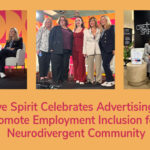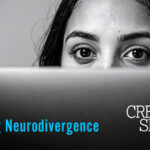By Menachem Rephun, Communications Manager, Creative Spirit
People who are neurodivergent comprise roughly 15 – 20% of the global population (according to sources like Northwestern Medicine, ZipDo Education Reports, and many others), and as much as 19% of adults in the U.S., according to a 2024 YouGov poll. So why is the neurodivergent community, including people with physical disabilities, so drastically under-represented (and often misrepresented) in Hollywood? To put this issue in perspective: only 2.4% of all speaking characters in the most popular movies from 2024 had disabilities, showing no increase from 2015. This data comes from a recent study from the University of Southern California’s Annenberg Inclusion Initiative, which found that in 2024, 44 films were missing characters with disabilities, while 71 were missing girls and women with disabilities. Film and television are two of the world’s most powerful and influential storytelling mediums, with enormous potential for de-stigmatizing disability and neurodiversity, promoting education and awareness, and giving the neurodivergent community authentic representation and a clear voice.
By improving positive neurodiverse representation, film and television can become empathy-building tools, sending a clear message that the millions of people who are neurodivergent are truly included in society. As Inclusimind.com puts it, “Accurate representation provides neurodivergent individuals with role models they can relate to, fostering a sense of belonging and validation. It empowers them to embrace their identities and encourages broader society to appreciate the unique strengths that come with neurodivergence.” So, what’s the solution? How does Hollywood, after more than a century, finally get it right?
Stopping Stereotypes and Improving Neurodivergent Authenticity on Screen
One key aspect of getting neurodiverse representation right is recognizing that representation needs to be about quality, just as much as quantity. In other words, negative, misleading, and inaccurate representation is just as much of a problem as none at all, if not even more so. Unfortunately, many film portrayals of neurodivergent characters still revolve around tired, outmoded cliches, tropes, and stereotypes, such as depicting characters on the autism spectrum as the “savant” or ‘’eccentric genius’’ archetype (think Dustin Hoffman in Rain Man, the TV series The Good Doctor, etc.), or “othering’’ or marginalizing characters who are neurodivergent.
One of the most egregious examples of misrepresenting neurodivergence is the 2021 film Music. The film was widely panned by both critics and neurodiversity advocates for its cartoonish, offensive portrayal of individuals on the autism spectrum, specifically the lead role, portrayed by neurotypical dancer Maddie Ziegler. David Fear of Rolling Stone offered one of the more memorable critiques, blasting the film as “a perma-cringe–inducing mark against its creators, a simplistic Holy Fool fable on anabolic steroids and a Skittles sugar high.” This serves as a valuable lesson in how not to represent neurodivergent characters on screen.
Films and TV shows like the ones mentioned above point to a long-standing problem, which is that, even with neurodiversity becoming a much more widespread concept (especially among Gen Z), many films and TV shows still base the entire identity of a character or characters exclusively around their neurodivergence, rather than taking a person-first approach. “A lot of us have only really been exposed to disabled actors playing disabled characters where their (story) arc is about disability,” Bridie McKim, an Australian actress with cerebral palsy, said in 2021. “I find the most interesting casting is when disabled people aren’t necessarily playing the disabled arc. It doesn’t mean that their character isn’t disabled, it’s just not the centre of their narrative.”
In short, creating more films and TV shows that emphasize the humanity and individuality of neurodivergent people would be a huge step forward, shifting the conversation around neurodiversity in a more positive direction. Gabriel Theis, a neurodivergent writer/director from Houston, Texas, has also shared how he’s used his work to improve representation and break down stereotypes. “It was…important to defy the stereotype that autistic people just don’t have a sense of humor,” Theis writes in a post for the Roadmap Writers blog, referring to his rom-com Cuddle Buddies. ‘‘Comedy is subjective, but I hope that I can at least correct the idea that autistic folks, or anybody on the spectrum doesn’t know how to detect a joke.”
Another of the clearest and most viable paths to improving film/TV representation is to employ more neurodiverse talent both behind and in front of the camera. Doing so will allow mainstream audiences to empathize with the lived experiences of people who are neurodivergent in a much more direct, genuine, and meaningful way. Unfortunately, neurodivergent individuals seeking to get their foot in the door as actors, directors, and other above-the-line roles still face many of the same barriers encountered across different forms of employment: ableism, unconscious bias, and a lack of accessible career paths. Changing this status quo requires that companies acknowledge the problem and step up to the plate, appreciating the innovation and growth that including neurodivergent professionals would bring.
One company that has modeled how to redefine representation, both behind and in front of the camera, is 9 Story Media Group. Based in Canada, 9 Story specializes in creating, distributing, and producing animated and live-action content for young audiences. In 2023, they oversaw the production of A Kind of Spark, a BBC children’s drama about a teenage girl with autism, adapted from an award-winning novel of the same name by Elle McNicoll, a writer who is also on the autism spectrum. In selling the rights to her book, McNicoll stipulated that at least 50% of the cast and crew of the film adaptation must be neurodivergent. In response, 9 Story Media went above and beyond, not only casting neurodivergent actors but hiring a neurodivergent director and neurodivergent Heads of Department as well.
This decision was motivated in part by Story 9’s realization that many of their neurodivergent crew members were worried about disclosure, due to the traditional production model of excluding workers based on gender, race, class, and disability. As CST Online writes, “9”, adding that 9 Story also encouraged clear consideration and communication on set, along with creating a language guide document explaining key terms around neurodiversity and disability. The company also ‘‘built in rest times throughout the day and finished each day on time, even if the schedule had not been completed, to ensure that neurodiverse cast and crew were not forced into a state of hyper or hypo arousal, causing a meltdown or shutdown.’’ Thanks to all of these outstanding efforts, 9 Story Media has come to represent a clear model for other companies to follow in improving neurodivergent representation and inclusion, both behind and in front of the camera.
Removing Barriers to Employment in the Film/Television Industries
Breaking into the film/television industry can be challenging and intimidating at the best of times. As the old saying goes, success depends, at least partially, on who you know. However, neurodivergent individuals aspiring to get their foot in the door have to contend with ableism, hiring processes that screen out people who are neurodivergent, unconscious bias, and a lack of accommodations on fast-paced sets. Given that many of these barriers are the same across all industries, the film/television industries can make a difference by implementing the same solutions that have worked elsewhere. These include making recruitment processes more flexible; implementing company-wide training to develop a more understanding workplace culture; and providing reasonable accommodations. The film and television industries stand to make huge gains by implementing these changes and becoming more inclusive of neurodiverse talent. ‘‘By not accommodating specific challenges that an individual may face, TV and Film is missing out on huge potential and great talent,’’ ReelTime Media writes in its guide, “Neurodivergency in the TV and Film Workplace’’. Implementing small, cost-effective, reasonable adjustments, they add, “can result in a huge increase in productivity. Small change = massive benefit.’’
Most advocates agree that change in neurodiverse employment and representation on screen is needed. The question is where that change can stem from. Some might assume that only executives/hiring managers have the power and wherewithal to implement real change in neurodiverse hiring. On the contrary: people who are neurodivergent can have just as much of an impact. In an essay for Film and TV Charity, Sam Maragaritis, an ADHD and neurodivergence coach and consultant, weighs in with advice for those getting started in film and television who might be experiencing anxiety about “masking”, or hiding neurodivergence. ‘‘Many neurodivergent professionals, across all industries, spend years masking (consciously or unconsciously), hiding their true selves to fit in, or to be seen as more ‘professional.’,’’ Margaritis writes. ‘‘But masking is exhausting and unsustainable, and the real toll is often burnout, anxiety, unexplained pain, autoimmune conditions or other mental health difficulties.’’
One way for people who are neurodivergent to beat these obstacles, Margaritis writes, is to appreciate the many exceptional strengths and capabilities that come with having a brain that works differently. These strengths include, but are not limited to, authenticity, big picture thinking, emotional sensitivity, lateral problem-solving, and being able to hyperfocus. Margaritis also encourages neurodivergent individuals to create systems that work for them, rather than against them. In other words, this involves ‘‘finding sustainable ways to support your focus, energy, and wellbeing.’’ Being confident and unapologetic in asking for support and reasonable accommodations is also extremely important. As Margaritis points out, asking for support and/or adjustments does not require a formal diagnosis. “Being clear and direct not only protects your energy,” he writes, “but it can also help shift the culture for others too.” Lastly, Margaritis offers one of his most important pieces of advice, which is to build a neurodivergent-friendly network by seeking out and connecting with other neurodivergent creatives in the industry. This can include neurodivergent peer support groups, online ADHD/autism communities in media, WhatsApp and Slack chats, and mentorship programs. “Your neurodivergence isn’t something to ‘overcome,’” he writes. “It’s a different operating system with so many strengths and huge creative potential. By working with your brain instead of against it, you can carve out a way of working that not only sustains you but inspires others.”
The State of Representation and Reasons for Optimism
Even with the enormous strides made by the disability rights movement and neurodiverse advocates over the past several decades, neurodivergent representation in Hollywood still has a long way to go. Films and television can be a tremendous source for good, capturing the humanity, strengths, and individuality of countless people whose minds work in different and remarkable ways. The mediums of film and television have the power to highlight both the positive aspects of being different and the basic humanity we all share.
Harnessing that potential means acknowledging that unconscious bias, discrimination in hiring, lack of reasonable accommodations, and inadequate training are still major issues that need to be resolved. It also depends on the willingness to give people who are neurodivergent a voice, both behind and in front of the camera. “While ‘diversity and inclusion’ discussions are pervasive in Hollywood right now, neurodiversity is seldom mentioned as part of those conversations,” Beth Dubber, a still photographer who has worked with neurodivergent actors on shows like Atypical, writes. “As the creative community continues to embrace unique voices, we have the chance to expand the aperture of that lens and shine a light on the depth and distinctiveness of actors on the autism spectrum.” Film and television have existed for the better part of a century. In 2025, it’s time for a change. Removing barriers to accessibility, letting neurodivergent professionals share their talent, improving authenticity; that’s how it happens. That’s how, after all this time, we finally get neurodivergent representation right.
Sources:
Healy, B. (2024). “Neurodiversity in the U.S.: 19% of Americans identify as neurodivergent”, YouGov. https://today.yougov.com/health/articles/50950-neurodiversity-neurodivergence-in-united-states-19-percent-americans-identify-neurodivergent-poll
Lauren, A. (2025). “New USC Report: Films Continue to Lack Disability Representation, But Some Progress for Leading / Co-Leading Characters”, Disability Belongs. https://www.disabilitybelongs.org/2025/08/2024-usc-report/
Inclusimind (2024). “Neurodiversity in Media: Representation of Neurodivergent Characters in Film and Television”, Inclusimind. https://inclusimind.com/2024/05/19/neurodiversity-in-media-representation-of-neurodivergent-characters-in-film-and-television/
SBS (2021). “Disability in the arts: Why don’t our screens reflect the society we live in?”, Special Broadcasting Service. https://www.sbs.com.au/whats-on/article/disability-in-the-arts-why-dont-our-screens-reflect-the-society-we-live-in/5c3l0nl6r
Theis, G. (2024). “Staff Blog: Resonant Neurodivergent Representation in Hollywood & My Genre Writing Journey”, RoadMap Writers. https://www.roadmapwriters.com/blog/staff-blog-resonant-neurodivergent-representation-hollywood-my-genre-writing-journey-gabriel
Brennan, M. (2024). “‘We Wanted to Incite Change’: How Production Practices on a Kind of Spark Can Mark Television Better for All of Us”, CST Online. https://cstonline.net/we-wanted-to-incite-change-how-production-practices-on-a-kind-of-spark-can-make-television-better-for-all-of-us-by-mhairi-brennan/
Dubber, B. (2022). “Hollywood On The Spectrum”, Seed and Spark. https://seedandspark.com/fund/hollywood-on-the-spectrum#story
Margaritis, S. (2025). “How to thrive as a neurodivergent person in the film, TV, and cinema industry”, The Film and TV Charity. https://www.linkedin.com/pulse/how-thrive-neurodivergent-person-film-tv-cinema-industry-o74ee/







